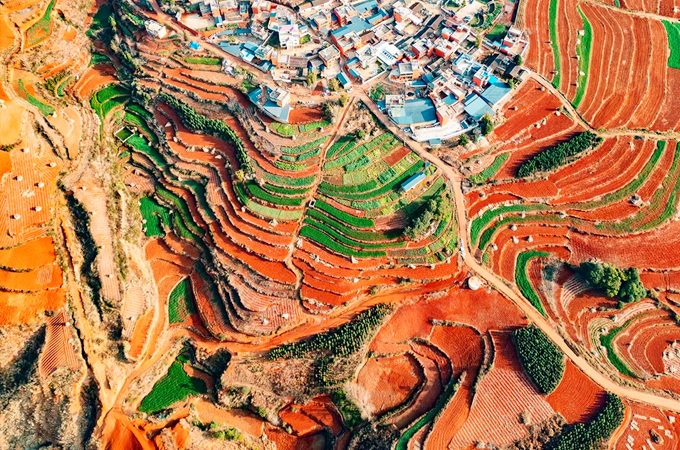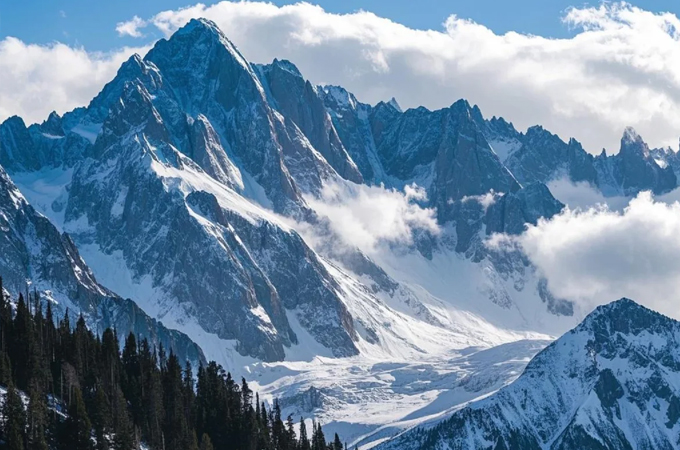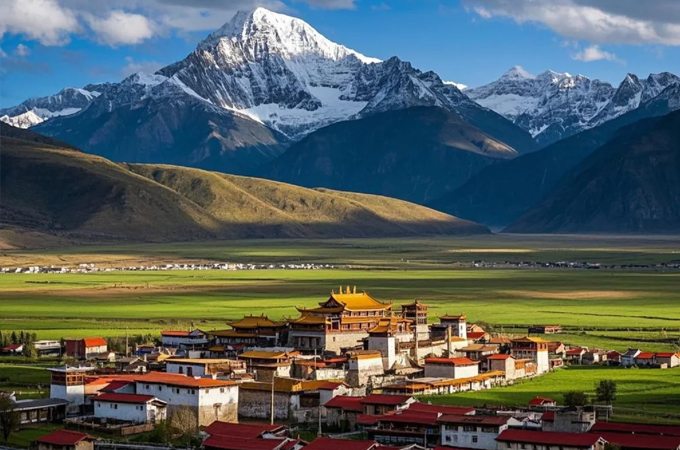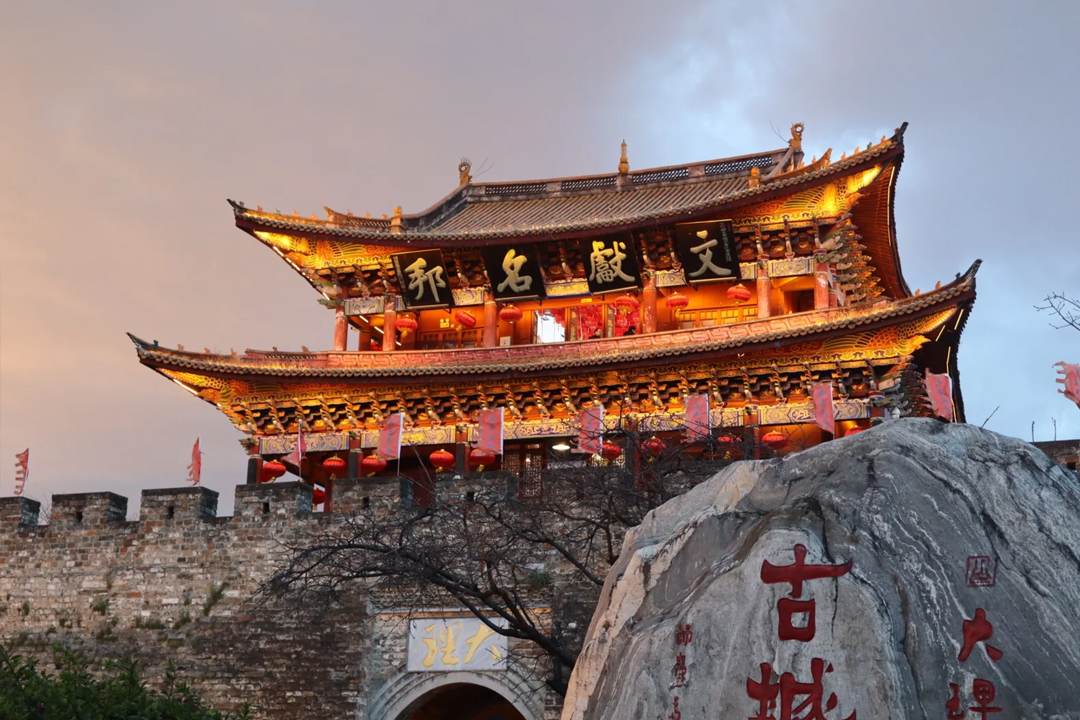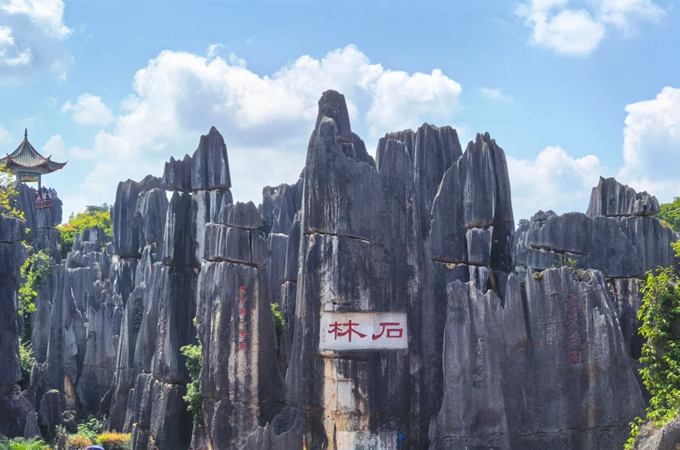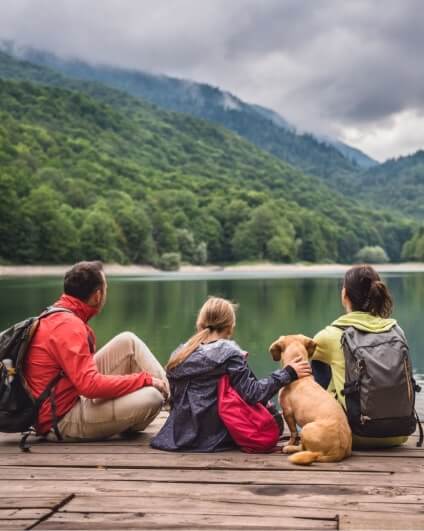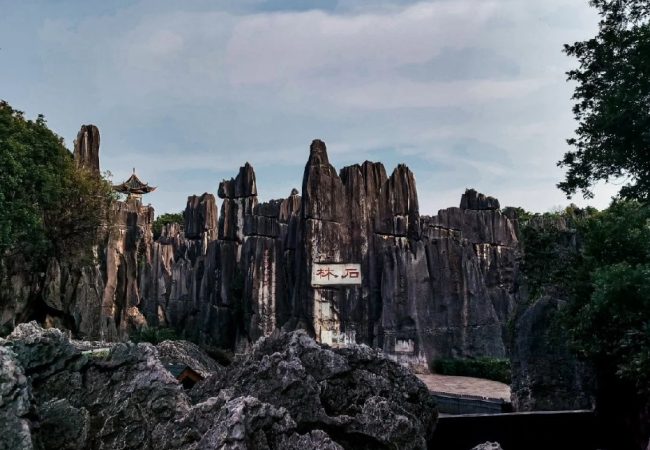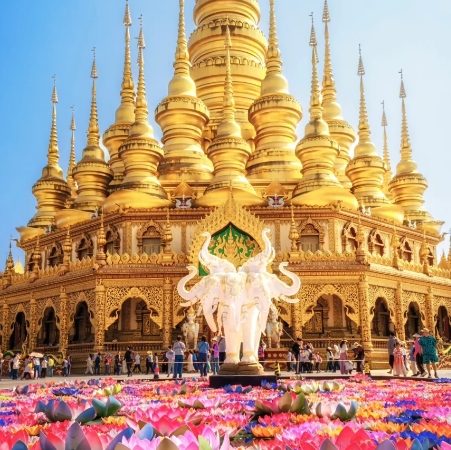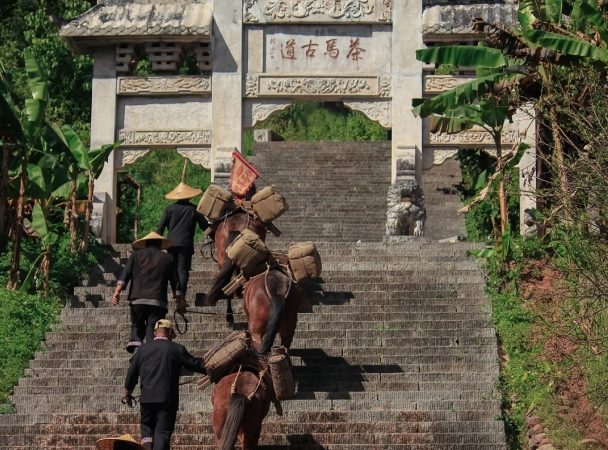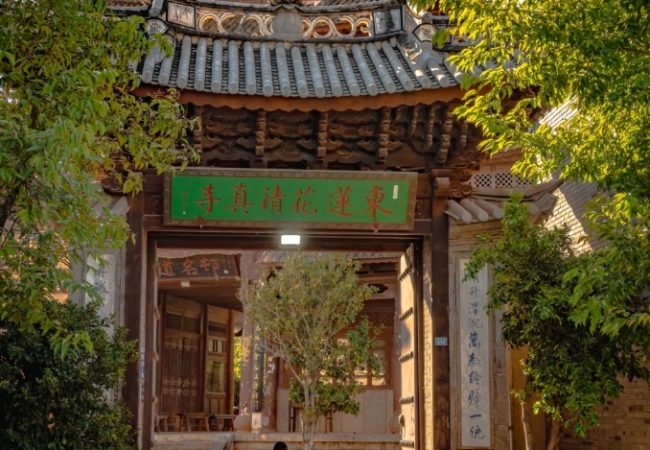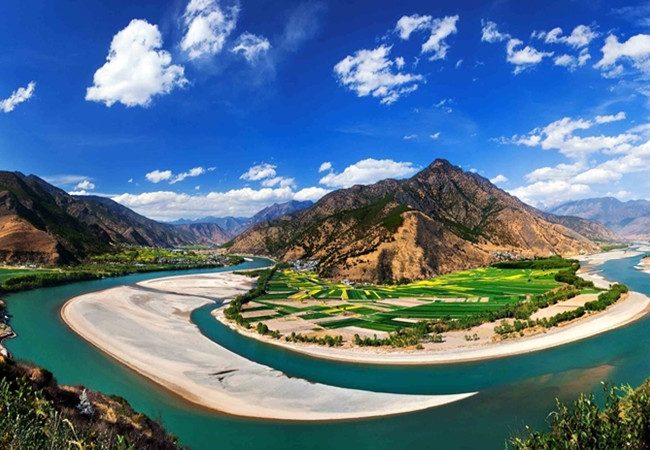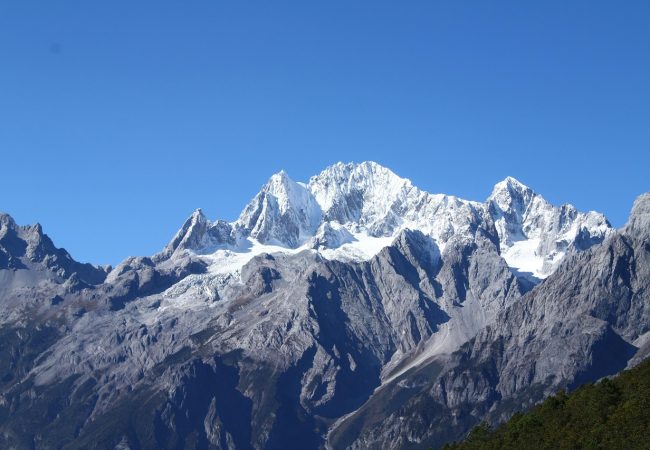
Tiger Leaping Gorge (虎跳峡) is located in Tiger Leaping Gorge Town (虎跳峡镇), Shangri-La City (香格里拉市), Diqing Tibetan Autonomous Prefecture (迪庆藏族自治州), Yunnan Province (云南省). It lies in the upper reaches of the Jinsha River (金沙江). Its unique geographical location makes it a masterpiece of nature. It is approximately 60 kilometers east of the ancient city of Lijiang (丽江市古城区) and about 105 kilometers north of Shangri-La city center. The gorge stretches for about 17 kilometers, with towering mountains on both sides. The Yulong Snow Mountain (玉龙雪山) to the east and the Haba Snow Mountain (哈巴雪山) to the west both exceed 5,000 meters in elevation, and the vertical drop of the gorge reaches over 3,900 meters. This immense difference in elevation creates the unique spectacle of Tiger Leaping Gorge, with its surging waves and majestic presence.
Weather and Best Time to Visit
Climate
The area of Tiger Leaping Gorge is influenced by a subtropical plateau monsoon climate, and due to its topography, the local weather is complex and variable.
Best Time to Visit
- Summer (June – August): The temperature generally ranges from 15℃ to 28℃. During this period, precipitation is abundant, and the water flow in the gorge increases dramatically, creating turbulent waves and showcasing the gorge’s grandeur. However, frequent rainfall can make roads slippery and increase the risk of geological disasters such as landslides in some mountainous areas. It is essential to closely monitor weather forecasts and road conditions before traveling.
- Winter (December – February): The temperature drops to between 0℃ and 10℃, with dry weather and mostly sunny days. At this time, visitors can clearly see the entire gorge and the majestic snow-capped mountains in the background. Although the water flow is relatively reduced, it still maintains its impressive momentum.
- Spring and Autumn (March – May, September – November): The climate is mild, with temperatures ranging from 8℃ to 20℃. Spring brings the revival of nature, with wildflowers blooming in the mountains, while autumn offers colorful vegetation that contrasts beautifully with the rushing river, combining both dynamic and picturesque beauty. Overall, spring and autumn are the best seasons to visit Tiger Leaping Gorge, with comfortable weather and a variety of scenic views. These seasons avoid the safety risks associated with summer rain and do not suffer from reduced water flow in winter, which could diminish the impact of the gorge’s spectacular scenery.
Attractions
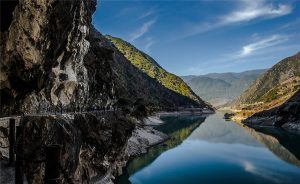
Upper Tiger Leaping Gorge (上虎跳)
The upper section of Tiger Leaping Gorge is the closest to Lijiang and the easiest to access. The Tiger Leaping Stone (虎跳石) in the middle of the river is its iconic feature. The rapid Jinsha River is split into two by the stone, and the water crashes against it with tremendous force, creating splashing waves and a deafening roar. Visitors can follow the well-constructed walkways along the river to experience the river’s powerful presence up close and appreciate the grandeur of nature.
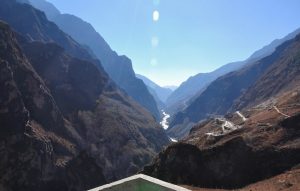
Middle Tiger Leaping Gorge (中虎跳)
The middle section is considered the most perilous and spectacular part of the gorge. Here, the canyon narrows further, and the river’s drop increases, resulting in faster water flow and numerous whirlpools and waterfalls. The famous “Starlit Sky” reef area features water crashing violently against the rocks, creating a scene that resembles a sky full of stars. Hiking along the rugged paths of the middle gorge offers different perspectives on the canyon and river, allowing visitors to fully experience the raw and wild charm of Tiger Leaping Gorge. However, the hiking route here is challenging and requires good physical fitness and outdoor experience. Safety must be a priority at all times along the way.
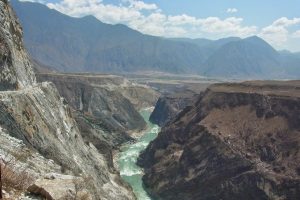
Lower Tiger Leaping Gorge (下虎跳)
The lower section of Tiger Leaping Gorge attracts many visitors with its open views and unique scenery. The river widens here, and the water flow slows slightly, but it still maintains its powerful presence. The surrounding canyon offers broader views, with distant mountain ranges and dense forests visible. Additionally, there are quaint villages in the lower gorge where visitors can experience the local, simple folk customs and the harmonious coexistence of people and nature.
Transportation
External Transportation
By Air
Visitors can choose to arrive at Lijiang Sanyi International Airport (丽江三义国际机场) or Diqing Shangri-La Airport (迪庆香格里拉机场). Lijiang Sanyi International Airport has a rich network of routes, making it convenient to connect from major domestic cities, and it is closer to Tiger Leaping Gorge. After arriving at the airport, travelers can take a chartered car, a special tourist bus, or transfer to a long-distance bus to reach the Tiger Leaping Gorge scenic area. Although Diqing Shangri-La Airport is farther from the gorge, there are several transportation options available to connect.
By Train
There is currently no direct railway to Tiger Leaping Gorge. Visitors can take a train to Lijiang Station (丽江站), where there are special tourist buses to the Tiger Leaping Gorge scenic area. Alternatively, one can take a long-distance bus from the Lijiang Bus Terminal to Tiger Leaping Gorge Town. The bus schedule is relatively frequent, making it a convenient option.
Internal Transportation
By Car
Chartering a car from Lijiang or Shangri-La to Tiger Leaping Gorge is a convenient and flexible way to travel. It allows for a customizable itinerary, with the option to stop along the way to enjoy the scenery. For group travel, the per-person cost of chartering a car is reasonable and can be tailored to visit the upper, middle, or lower sections of the gorge first. However, it is important to choose a reputable vehicle and an experienced driver, and to clarify the price and itinerary in advance.
By Public Transport
There are buses from the Lijiang Bus Terminal to Tiger Leaping Gorge Town. After arriving in the town, visitors need to transfer to a local minivan or walk a short distance to reach the upper gorge scenic area. Public transport to the middle and lower sections of the gorge is less convenient, with fewer bus schedules and the need for multiple transfers, which can be time-consuming. Therefore, for those planning to visit the middle and lower sections, it is recommended to charter a car or join a local tour group.
By Self-Drive
Self-driving enthusiasts can rent a car and drive to Tiger Leaping Gorge. Starting from Lijiang, travelers can follow the Lijiang-Shangri-La highway, which offers picturesque scenery along the way. However, it is important to note that the mountain roads are winding and steep, especially during the rainy season when there is a risk of landslides and falling rocks. When parking near the scenic area, be sure to use designated parking lots to ensure vehicle safety.
Accommodation
Tiger Leaping Gorge Town (虎跳峡镇)
Tiger Leaping Gorge Town offers a wide range of accommodation options. Hotels are relatively well-equipped with complete facilities and good service, with prices typically ranging from 200 to 500 yuan per night. Guesthouses, mostly run by local residents, feature a strong ethnic flavor and are more affordable, generally costing between 100 and 300 yuan per night. Some guesthouses have excellent locations with beautiful views of the surrounding gorge and are conveniently located for easy access to various scenic spots.
Surrounding the Scenic Area
In the vicinity of the scenic area, especially near the upper gorge, there are several homestays. These homestays are close to the scenic area, allowing visitors to conveniently enjoy the gorge’s beauty early in the morning and late in the evening in a tranquil setting. However, the accommodation conditions may be relatively simple, with prices ranging from 150 to 400 yuan per night. Along the hiking route in the middle gorge, there are also some basic rest stations for accommodation. These are cheaper but have limited facilities, only meeting basic lodging needs.
Food
Smoked Pork Rib Hot Pot (腊排骨火锅)
A local specialty, the hot pot uses locally cured pork ribs, which are firm and rich in flavor. Cooked with a variety of vegetables, the soup is thick and flavorful, with the ribs’ aroma fully infused into the broth. The average cost per person is about 50 – 80 yuan.
Yak Meat Soup Pot (牦牛肉汤锅)
Yak meat is a specialty of the plateau, with tender and nutritious meat. The soup pot retains the meat’s original flavor through stewing and is best enjoyed with locally made chili dipping sauce. It is both warming and delicious, with an average cost of 60 – 100 yuan per person.
Naxi Grilled Fish (纳西烤鱼)
Fresh river fish are grilled over charcoal and then simmered with special sauce and side dishes. The fish skin is crispy and golden, while the meat is tender and flavorful, perfectly combining with the sauce. The average cost is around 40 – 70 yuan per person.
Baba (粑粑)
A variety of baba is available, including wheat and corn baba. These snacks are soft and chewy, with both sweet and savory flavors. They are simple but authentic and can be found in street stalls and restaurants at affordable prices, ranging from 2 to 5 yuan each.
Tips for Hiking
Equipment Preparation
- Shoes: Choose a pair of anti-slip, comfortable, and well-supported hiking shoes. Some sections of the hiking route in Tiger Leaping Gorge are rugged and muddy, and proper shoes can effectively prevent slipping and sprains.
- Clothing: Bring appropriate clothing according to the season. Even in summer, there is a significant temperature difference between day and night in the mountains, so a warm jacket is necessary. Additionally, breathable and sweat-wicking clothing is recommended to manage perspiration during the hike.
- Backpack: Prepare a medium-sized, comfortable backpack to carry essential items such as drinking water, food, rain gear, and first-aid supplies.
Safety Awareness
- Follow Signage: Strictly adhere to the designated routes and follow the signage set up by the scenic area. Do not venture off the marked paths to avoid getting lost or encountering danger.
- Watch for Falling Rocks: Some sections may have a risk of falling rocks, especially during the rainy season or when passing steep mountain areas. Always be alert and avoid lingering in areas with obvious signs of falling rocks.
- Travel in Groups: It is advisable to hike in groups, especially when heading to more challenging areas like the middle gorge. In case of emergencies, companions can provide mutual assistance and support.
Pacing Yourself
- Plan Your Route: Based on your physical condition, plan your hiking route and rest times reasonably to avoid overexertion. If you feel tired, take a break at rest stations or safe spots along the way.
- Stay Hydrated and Energized: Regularly replenish water and food during the hike to maintain your energy levels. Carry high-energy snacks such as chocolate and beef jerky, but remember not to litter and keep the scenic area clean.
If you would like to learn more about hiking itineraries, please check out our Tiger Leaping Gorge tour packages.

